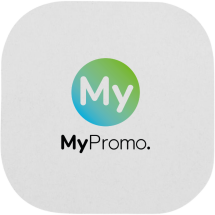Web offset
Wat is web offset
Web offset printing is a highly efficient and widely used printing technique, particularly relevant in the realms of mass-produced publications and promotional gifts. This method involves continuously feeding a large roll of paper through a printing press. Rolls, or "webs", of paper are printed as they are unrolled, distinguishing it from sheet-fed printing processes where individual sheets are fed into the machine.
A Quick Dive into History and Definition
The development of web offset printing began in the late 19th century, evolving from earlier forms of rotary printing. It became particularly popular for its speed and its ability to produce high volumes of prints quickly. Essentially, web offset is a form of offset printing where the inked image is transferred (or "offset") from a plate to a rubber blanket, and then onto the rolling paper – a method that has revolutionised the speed and scale of printing.
Understanding the Basic Process
The process of web offset printing can be distilled into several key stages. Initially, the design is set digitally and plates are created, each corresponding to one colour used in the final print. The plates are mounted on cylinders in the press. As the paper rolls through, each cylinder applies its respective colour through the rubber blankets to the paper, thus building up the final image as the paper moves through the press.
Essential Tools and Materials in Web Offset
To execute web offset printing effectively, a variety of tools and materials are required. Plates, usually made of aluminium, are crucial for transferring the images. Rubber blankets are used to transfer the ink from the plates onto the paper. Specialised inks that dry quickly are essential for ensuring both quality and efficiency in the printing process. Large rolls of paper are continuously fed into the printing press, which combines all these elements to execute the print. The printing press itself is a sophisticated piece of machinery that manages the precise application of ink and the consistent movement of paper to produce high-quality printed materials efficiently.
Key Applications and Examples in Promotions
Web offset printing plays a vital role in efficiently producing large volumes of promotional items. This technique is widely used for creating personalised calendars, personalised posters, personalised flyers. Each of these applications benefits from the rapid production capabilities and cost-effectiveness of web offset printing, making it a preferred method for extensive promotional campaigns.
Advantages of Using Web Offset Printing
Choosing web offset for your printing needs offers a variety of benefits. It is highly efficient, ideal for large runs due to its high-speed production capabilities. This method is also cost-effective, with lower costs per unit when producing high volumes. In terms of quality, web offset provides consistent high-quality prints with fine detail. Additionally, it offers flexibility, able to accommodate a wide variety of paper types and weights, making it a versatile choice for various printing projects.
Comparing Web Offset with Other Techniques
When compared to digital printing, for instance, web offset offers greater efficiency and lower cost per unit for high-volume jobs, though it lacks the variable data capabilities of digital printing. Compared to sheet-fed offset, web offset is faster and more suited to large-scale productions but may not match the flexibility of handling different paper sizes and types that sheet-fed processes offer.
Potential Challenges and Limitations
While web offset printing is advantageous for many projects, it also comes with its set of challenges. The high initial setup costs can make it less economical for small runs. Additionally, once the printing setup has begun, any changes to the print design can be costly and time-consuming to implement. There are also environmental concerns to consider; the use of large quantities of paper and ink necessitates responsible sourcing and disposal practices to minimise the environmental impact.
What is web offset printing used for?
Web offset is primarily used for high-volume print jobs like newspapers, magazines, and promotional materials.
How does web offset printing work?
What are the advantages of web offset printing?
It offers high-speed production, cost efficiency, and consistent quality, particularly suited to large runs.
Can web offset printing be used for small quantities?
It is generally not cost-effective for small runs due to high setup costs.
How does web offset compare to digital printing?
Web offset is more efficient for large volumes but lacks the customisation and low initial costs of digital printing.



